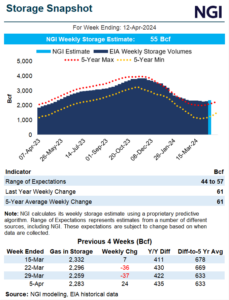Infrastructure | LNG | LNG Insight | Natural Gas Prices | NGI All News Access | NGI The Weekly Gas Market Report | Regulatory | Shale Daily
North American Natural Gas Pipeline Permitting Finding ‘Balance’ as Energy Security Concerns Grow, TC CEO Says
© 2024 Natural Gas Intelligence. All rights reserved.
ISSN © 1532-1231 | ISSN © 2577-9877 | ISSN © 1532-1266 | ISSN © 2158-8023 |



